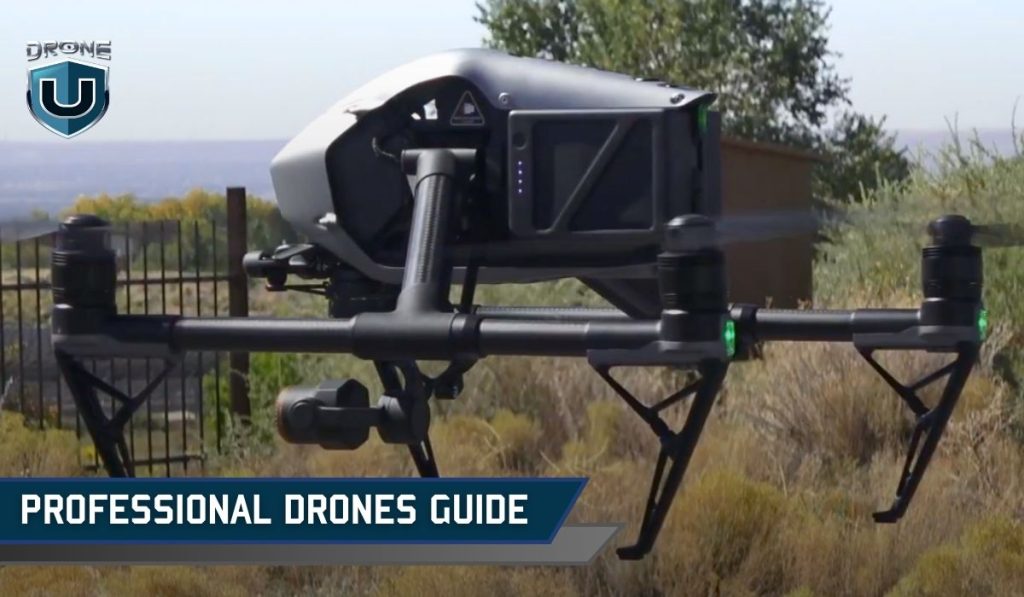
Just a few years ago, professional drones were considered high-tech novelties. Today these versatile machines have literally transformed our skies, thanks to their game-changing capabilities.
Professional drones are not your run-of-the-mill, toy-like gadgets of yesteryear.
What started as tools for capturing stunning aerial footage or mapping sprawling landscapes has become an indispensable technology. Its applications span from filmmaking to industrial inspections.
When it comes to drones, we’ve come a long way from those toy-like gadgets that used to fill our skies. Today, professional drones are more than just flying cameras—they’re powerhouses of innovation, offering unmatched precision, reliability, and adaptability.
In this guide, we’ll help you navigate the world of professional drones with a sprinkle of wit and a dash of seasoned wisdom.
Let’s first understand what professional drones are.
Understanding Professional Drones
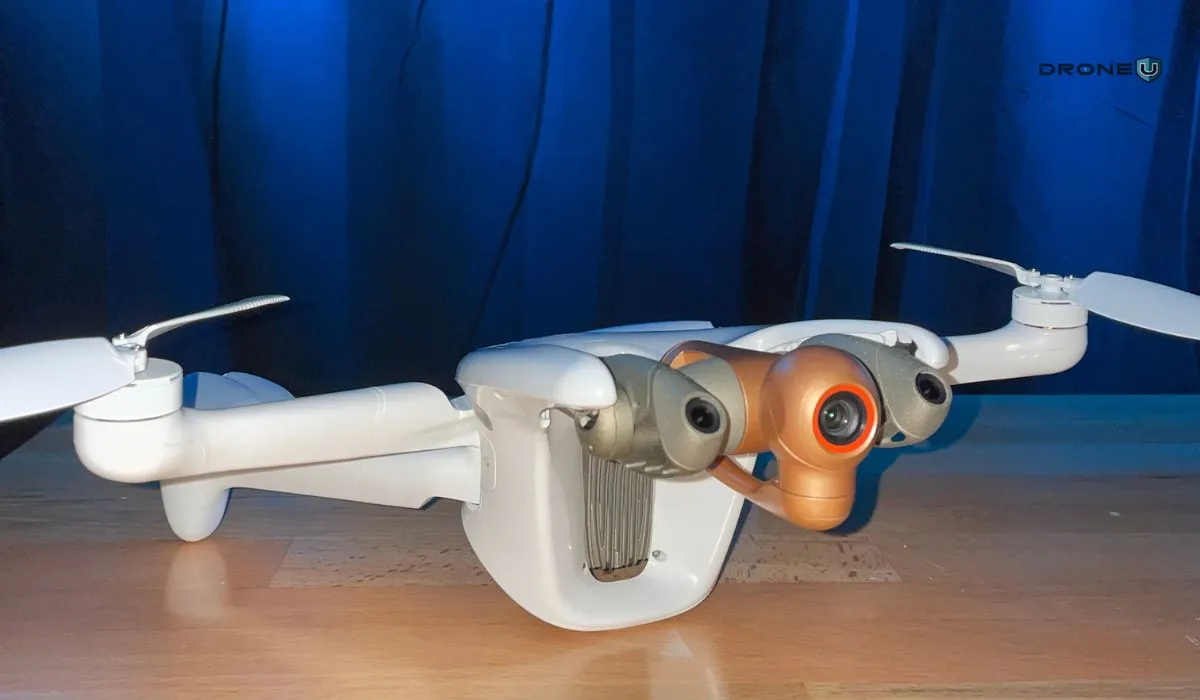 Parrot Anafi Ai
Parrot Anafi Ai
Professional drones are more than just flying cameras. These drones are designed to tackle the toughest tasks with precision, reliability, and top-tier performance.
Often referred to as enterprise drones, these aerial workhorses aren’t the toys you might find under the Christmas tree. These are the tools of the trade for experts.
What sets this line of drones apart from consumer models? Let’s find out.
Professional Drones vs. Regular Drones
| Aspect | Regular Drones | Professional Drones |
| Features | Regular drones are typically equipped with basic sensors, standard cameras, and limited payload options. They feature basic GPS systems and have short-range connectivity, with simple autonomous flight capabilities. | Professional drones come with advanced sensors, high-quality cameras, and specialized payload options (such as thermal or LiDAR). They feature enhanced GPS systems, long-range connectivity, and advanced autonomous flight capabilities, making them suitable for complex tasks. |
| Quality | Regular drones are often made from lightweight materials that prioritize ease of use over durability. They are designed mainly for recreational use and may lack advanced stabilizers, resulting in less stable flight and lower camera quality. | Professional drones are built from durable, strong materials designed to withstand demanding environments. They feature advanced stabilizers for smooth flight, superior imaging quality, and enhanced stability, making them ideal for commercial applications. |
| Price | Regular drones are more affordable, catering to hobbyists and casual users. Their lower price reflects their simpler features and technology. | Professional drones are significantly more expensive, reflecting the advanced technology, enhanced reliability, and performance required for commercial and industrial applications. |
We’ll divide professional drones into two categories: foreign and domestic drones, each with its own unique set of advantages.
First, we’re taking off with foreign options.
Foreign Stars: DJI Enterprise Drones
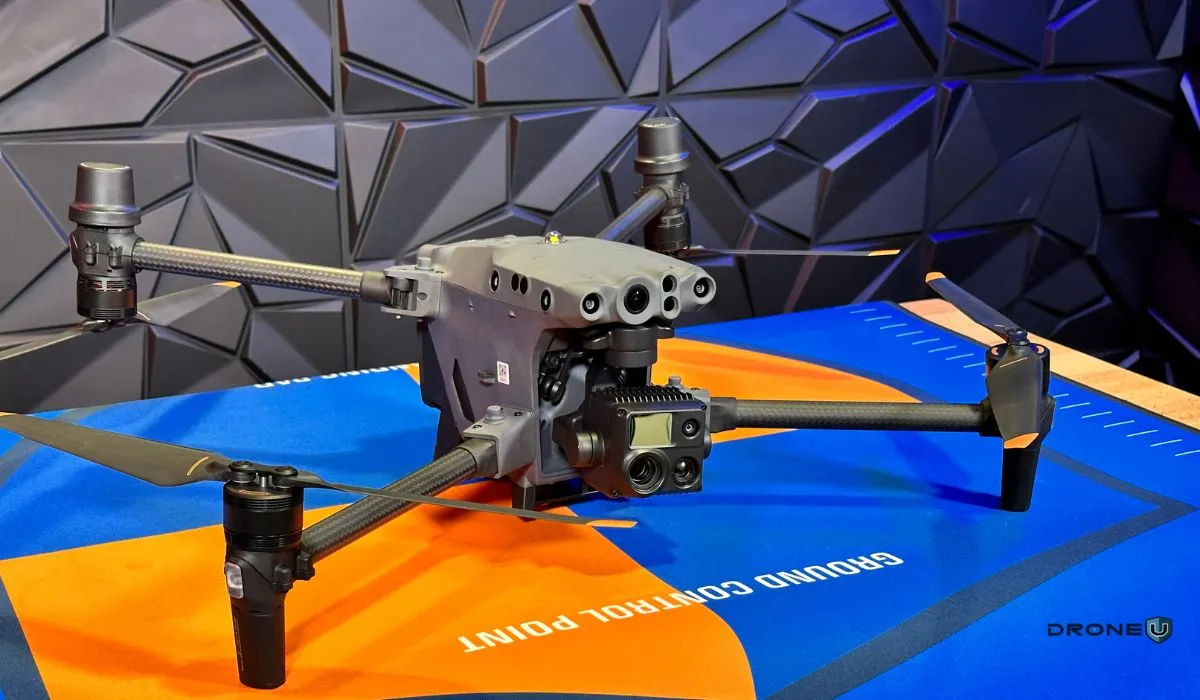 DJI M30
DJI M30
When it comes to foreign professional drones, DJI’s enterprise lineup undeniably takes the crown. Renowned for their innovation and reliability, DJI sets the gold standard in the industry.
These drones are not just about capturing stunning photos and videos—they’re engineered with advanced features that push the boundaries of what drones can achieve.
Equipped with sophisticated software, they can autonomously follow pre-programmed flight paths, creating intricate 2D maps and 3D models with remarkable precision.
Additionally, DJI drones have fewer airspace restrictions, giving you a significant edge when navigating the skies.
One standout feature is the impressive ‘Attitude Mode,’ which ensures steady flight paths and precise control regardless of weather conditions, virtually eliminating the risk of flyaways.
To further enhance their capabilities, you can equip these drones with optional accessories like an RTK antenna for accurate positioning, a speaker for communication, or a flashlight for nighttime operations.
In the DJI enterprise roster, you’ll find a wide array of professional drones designed to meet diverse needs.
Let’s take a closer look at the best DJI drones available and what makes them stand out:
- Matrice 30
- Matrice 30T
- Mavic 3 Enterprise
- Mavic 3 Thermal
- Mavic 3 Multispectral
- Matrice 350
1. Matrice 30
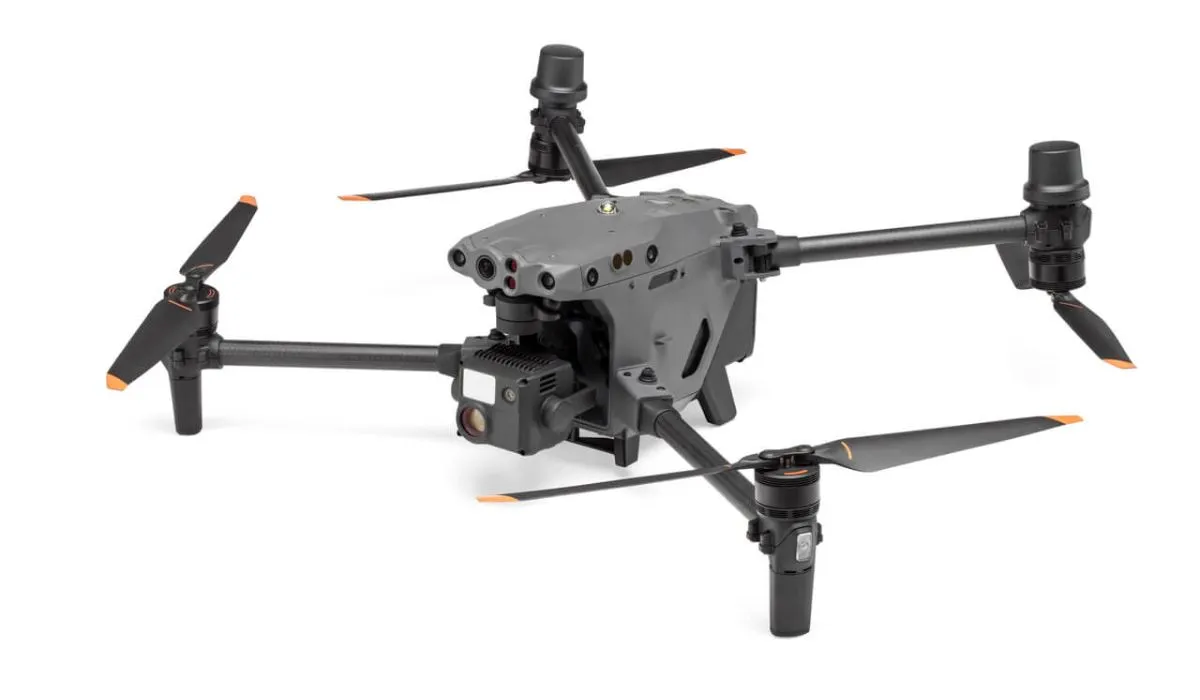 Source: DJI
Source: DJI
The Matrice 30 is a high-performance enterprise drone from DJI. It is equipped with a triple-camera gimbal that includes a wide-angle camera, a zoom camera, and a laser rangefinder. This makes it ideal for a wide range of applications, such as inspection, mapping, and search and rescue.
Features of Matrice 30
| Feature | Matrice 30 |
| Camera | 48MP zoom camera, 12MP wide camera |
| Thermal camera | 640x512px resolution, 1280x1040px infrared image super-resolution |
| Laser rangefinder | 1200m |
| Obstacle avoidance | 360-degree omnidirectional obstacle avoidance |
| Flight time | 41 minutes |
| Wind resistance | 15 m/s |
| Service ceiling | 7000 m |
| Maximum speed | 23 m/s |
| Transmission | OcuSync 3 Enterprise, triple channel 1080p transmission |
| Payload attachment area | Yes |
| Dimensions (unfolded, excl. props) | 288 x 217 x 105 mm |
| Weight | 3.7 kg |
2. Matrice 30T
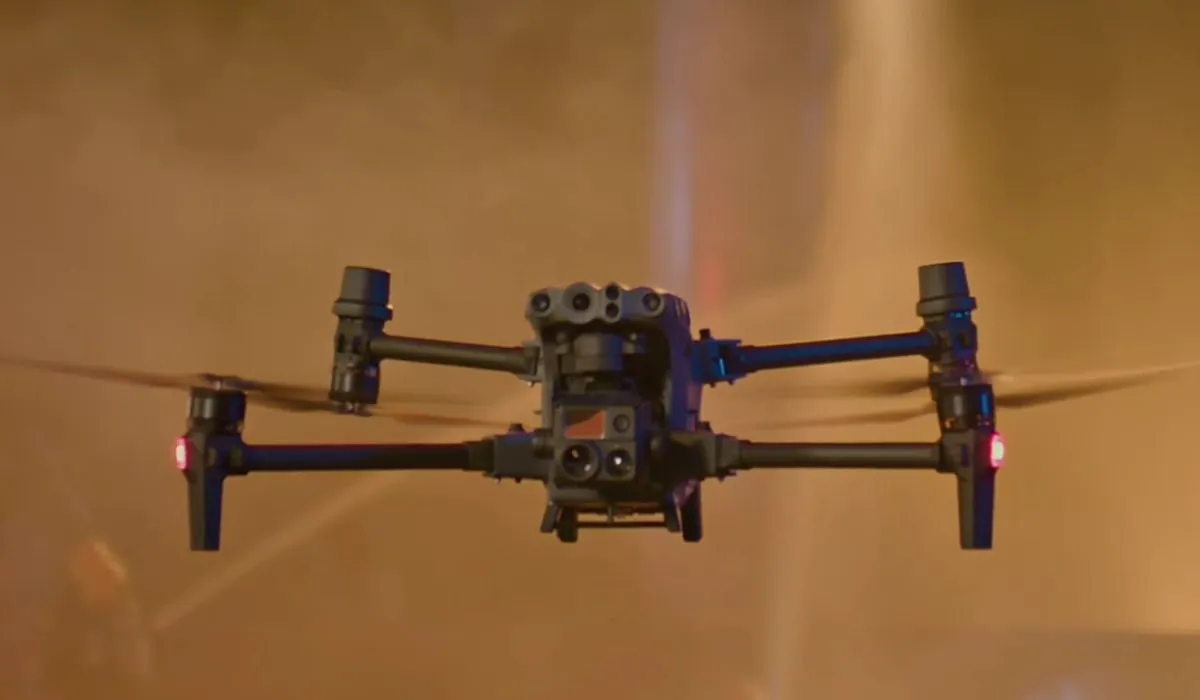 Source: DJI
Source: DJI
The Matrice 30T is a variant of the Matrice 30 that includes a thermal imaging camera in addition to the other three cameras. This makes it ideal for applications where thermal imaging is required, such as firefighting, search and rescue, and night operations.
Features of Matrice 30T
| Feature | Matrice 30T |
| Payload | Zenmuse H20T: 12MP wide, 20MP zoom, 640×512 thermal camera with infrared image super-resolution |
| Camera resolution | Wide: 12MP, Zoom: 20MP, Thermal: 640×512 (with infrared image super-resolution: 1280×1040) |
| Video resolution | Wide: 4K/30fps, Zoom: 3.5K/30fps, Thermal: 1080p/30fps |
| Field of view | Wide: 84°, Zoom: 20-200°, Thermal: 120° |
| Flight time | Up to 55 minutes |
| Max speed | 23 m/s (51 mph) |
| Transmission range | 15 km (9.3 miles) |
| Weight | 9.3 kg (20.5 lbs) |
| Dimensions | Folded: 774 x 495 x 472 mm (30.47 x 19.5 x 18.58 in), Unfolded: 1460 x 593 x 815 mm (57.48 x 23.35 x 32.09 in) |
| Operating temperature | -10°C to 50°C (14°F to 122°F) |
3. Mavic 3 Enterprise
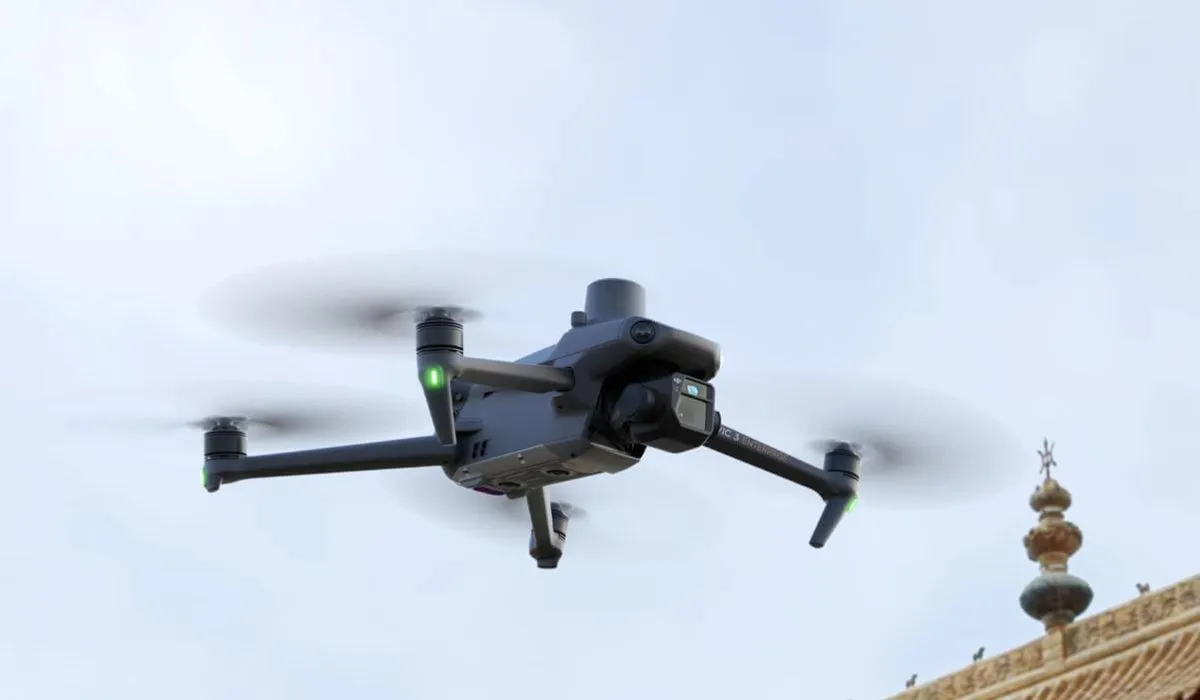 Source: DJI
Source: DJI
The Mavic 3 Enterprise is a more compact and portable enterprise drone from DJI. It is equipped with a dual-camera gimbal that includes a wide-angle camera and a zoom camera. It also has many other features that make it ideal for enterprise use, such as a mechanical shutter, an RTK module, and a variety of accessories.
Features of Mavic 3 Enterprise
| Feature | Mavic 3 Enterprise |
| Camera | Dual camera system with 4/3 CMOS wide-angle camera and 12MP telephoto camera with 56x optical zoom |
| Video resolution | Up to 5.1K/30fps |
| Photo resolution | Up to 20MP |
| Mechanical shutter | Yes |
| RTK | Yes (optional) |
| Omnidirectional obstacle avoidance | Yes |
| Advanced RTH | Yes |
| APAS 5.0 | Yes |
| Maximum flight time | Up to 45 minutes |
| Maximum flight speed | Up to 40 mph (64.37 km/h) |
| Operating temperature range | -10° C to 40° C (14° F to 104° F) |
| Wind resistance | Up to 25 mph (40.23 km/h) |
| Weight | 900 grams (without battery) |
4. Mavic 3 Thermal
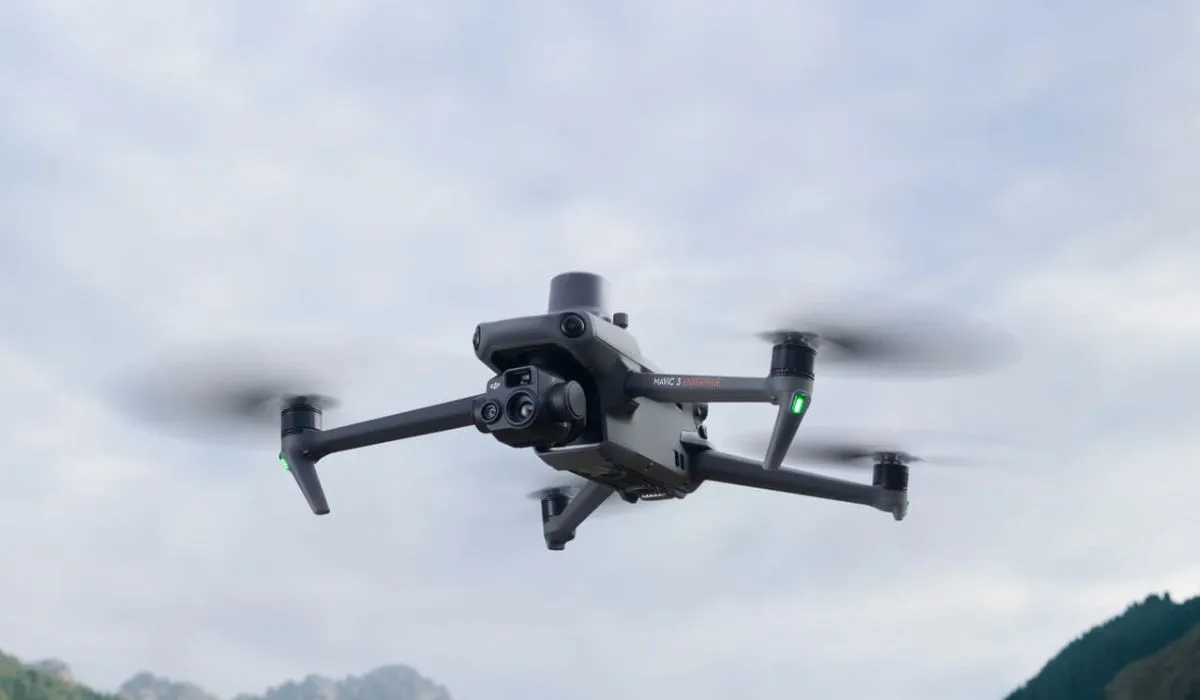 Source: DJI
Source: DJI
The Mavic 3 Thermal is a variant of the Mavic 3 Enterprise that includes a thermal imaging camera in addition to the wide-angle camera. This makes it ideal for applications where thermal imaging is required, such as firefighting, search and rescue, and night operations.
Features of Mavic 3 Thermal
| Feature | Mavic 3 Thermal |
| Camera | 48MP wide camera, 12MP tele camera with 56x hybrid zoom, 640×512 thermal camera |
| Sensor | 4/3 CMOS (wide), 1/2-inch CMOS (tele), Uncooled VOx Microbolometer (thermal) |
| Video resolution | 5.1K/30fps (wide), 4K/60fps (tele), 3840 x 2880/30fps (thermal) |
| Flight time | 45 minutes (max) |
| Transmission range | 15 kilometers (O3+ video transmission system) |
| Obstacle avoidance | Omnidirectional obstacle sensing |
| Intelligent flight modes | ActiveTrack 5.0, MasterShots, QuickShots, Advanced RTH, SmartPhoto, etc. |
| Thermal imaging features | Point and area temperature measurement, high temperature alerts, color palettes, isotherms |
5. Mavic 3 Multispectral
 Mavic 3 Multispectral | Source: DJI
Mavic 3 Multispectral | Source: DJI
The Mavic 3 Multispectral is a variant of the Mavic 3 Enterprise that is equipped with a multispectral camera. This type of camera can capture images in multiple wavelengths of light, which can be used to create detailed maps and other data products.
Features of Mavic 3 Multispectral
| Feature | Mavic 3 Multispectral |
| Camera | Dual-camera system with a 20MP RGB camera and a 4x5MP multispectral camera |
| Multispectral camera bands | Green (560nm ± 16nm), Red (650 nm ± 20 nm), Red edge (730 nm ± 20 nm), Near-infrared (NIR) 860 nm ± 26 nm |
| RGB camera sensor | 4/3 CMOS, 20MP image sensor, mechanical shutter with a maximum speed of 1/2000 |
| RGB camera video resolution | 5.1K/30fps, 4K/60fps, 2.7K/120fps |
| Flight time | Up to 45 minutes |
| Maximum speed | 40 mph (64.4 kph) in Sport mode |
| Maximum wind resistance | 25 mph (40.2 kph) |
| Obstacle avoidance | Omnidirectional obstacle sensing |
| Positioning | GNSS, RTK module (optional) |
| Operating temperature | -10°C to 40°C (14°F to 104°F) |
6. Matrice 350
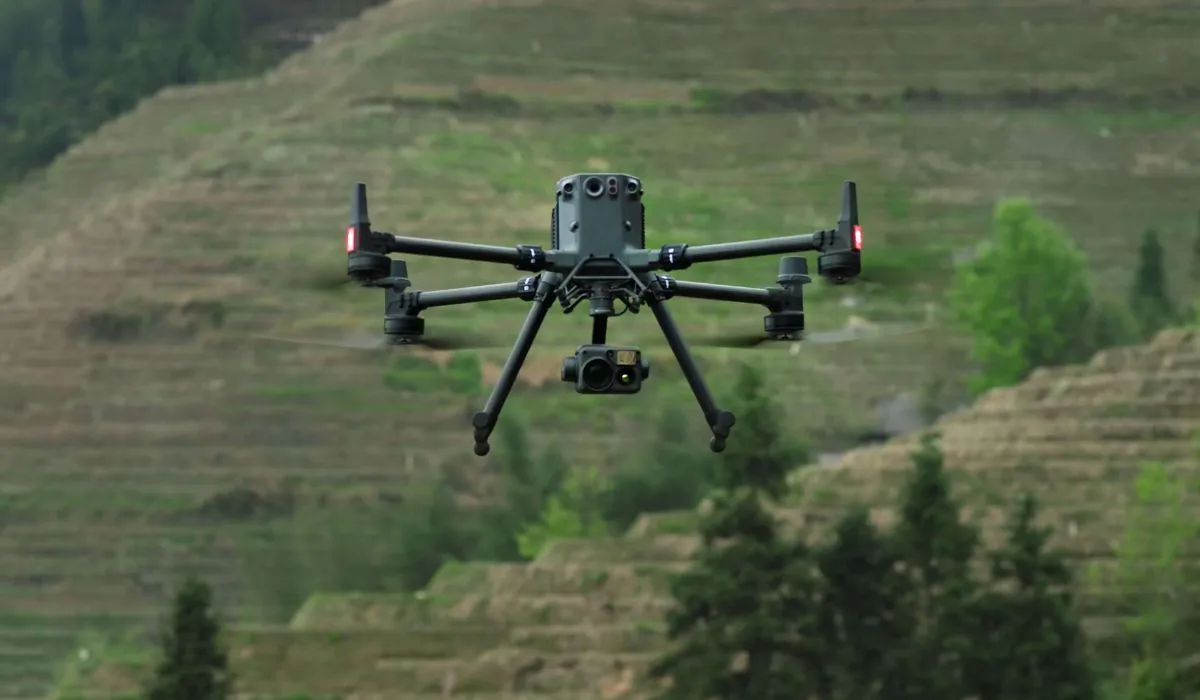 Source: DJI
Source: DJI
The Matrice 350 is an older enterprise drone from DJI. It is still a popular choice for many applications, such as inspection, mapping, and search and rescue. It is equipped with a dual-camera gimbal that includes a wide-angle camera and a zoom camera. It also has some other features that make it ideal for enterprise use, such as an RTK module and a variety of accessories.
Features of Matrice 350
| Feature | Matrice 350 |
| Payload capacity | 2.7 kg |
| Flight time | 55 minutes (max) |
| Transmission system | OcuSync 3 Enterprise |
| Operating temperature | -20°C to 50°C |
| Weather resistance | IP55 |
| Camera compatibility | DJI Enterprise payloads (e.g., Zenmuse H20N, Zenmuse P1, Zenmuse L1) |
| Remote control | DJI RC Plus |
| Safety features | Arm locking safety mechanism, FPV camera for low light conditions, ADS-B receiver, airbrake system |
| Other features | Dual downward gimbals, single upward gimbal, E-Port open interface, Waypoint Navigation, Advanced Pilot Assistance Systems (APAS), Smart Inspection |
If you’re looking for the Mac-Daddy of them all, the Matrice 350 is a beast in its own right. But there’s a hidden gem in the collection – the Inspire 3. This versatile drone bridges the gap between enterprise and consumer drones, offering mapping capabilities and an array of video modes, frame rates, and slow-motion options.
However, there’s a caveat with foreign drones. They’re often capped at shooting 4K footage at 30 fps. While that might suffice for your construction projects, it’s not going to make the cut for big-screen productions. That’s where the Inspire 3 truly shines. It offers high frame rates, attitude mode, and a stellar x9 camera, making it a versatile contender for professionals who wear multiple hats.
And if you’re still rooting for the Inspire 2, you’re not alone. It’s a formidable mapping and video machine. Paired with the standard safety features, the Inspire aircraft offers the full suite of DJI’s capabilities.
The Inspire 2’s H-frame design is a boon. Its low center of gravity gives it remarkable wind handling, agility, and stability in a variety of environments. And don’t fret about flying at high altitudes; DJI has you covered with high-altitude props for these airframes.
Now, let’s change course and explore the domestic drone options for professionals.
Domestic Champions: Best NDAA-Approved Professional Drones
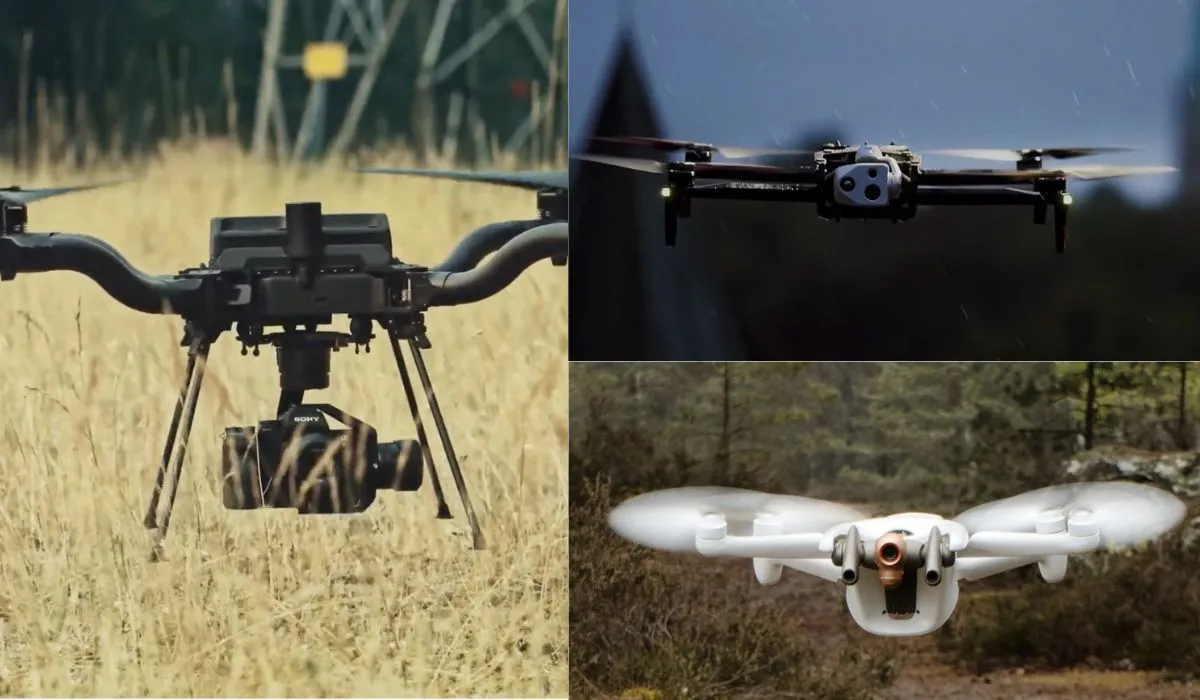
When it comes to American made professional drones, it’s all about meeting NDAA requirements and having the ability to map and capture high-frame-rate video and stunning photos.
After a thorough exploration of the domestic drone landscape, we’ve identified the champions:
- Freefly Astro
- Skydio x10
- Parrot Anafi Ai
1. Freefly Astro
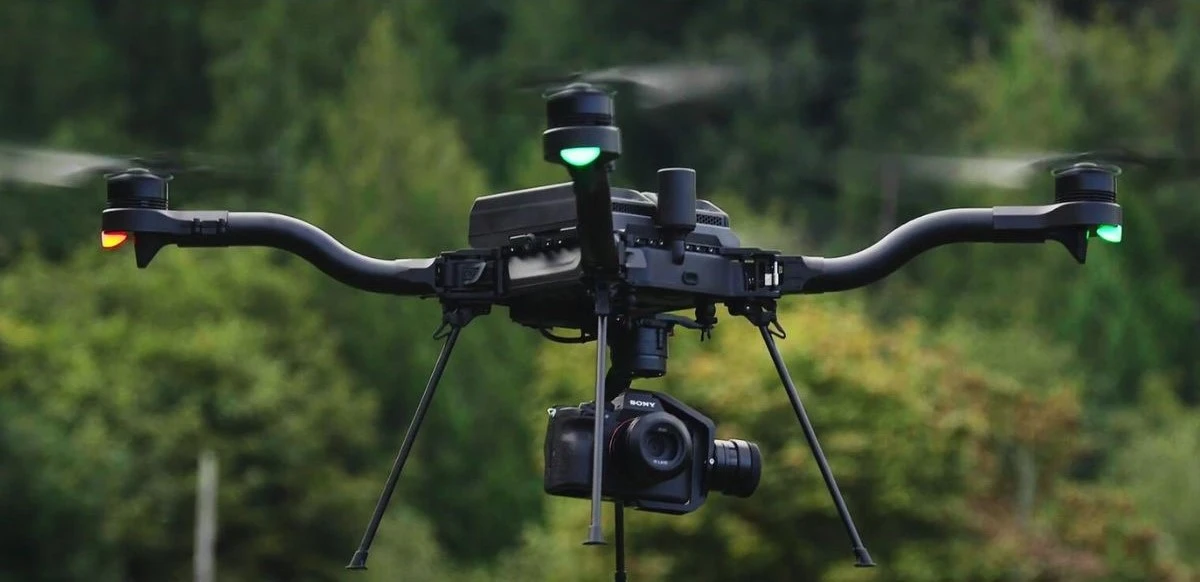 Source: Freefly
Source: Freefly
Taking the top spot at around $20,000, the Freefly Astro offers impressive flight time, NDAA compliance, and an incredible transmission distance. It comes equipped with a Sony A7r5 camera that’s more than capable of capturing amazing videos and photos.
With various additional payloads available, the Freefly Astro is the Swiss Army Knife of drones, catering to your every need.
Features of Freefly Astro
| Feature | Freefly Astro |
| Dimensions (unfolded) | 917 mm diameter (without props), 1407 mm diameter (including props) |
| Weight | 6,665 g (max takeoff weight) |
| Payload | 1,500 g (max payload) |
| Flight time | Up to 37 minutes (typical flight time with mapping payload is 25-32 minutes) |
| Speed | Up to 20 m/s (max speed in position mode) |
| Flight controller | Freefly custom designed Skynode |
| Flight controller software | Auterion Enterprise PX4 (custom for Astro) |
| Communication link | Herelink RF (2.4 GHz and 5.8 GHz) |
| Video transmission | 1080p60 HD video transmission |
| Battery | 2x Freefly Super Light Batteries (SL8-Air) |
| Motor | Freefly F45 |
2. Skydio x10
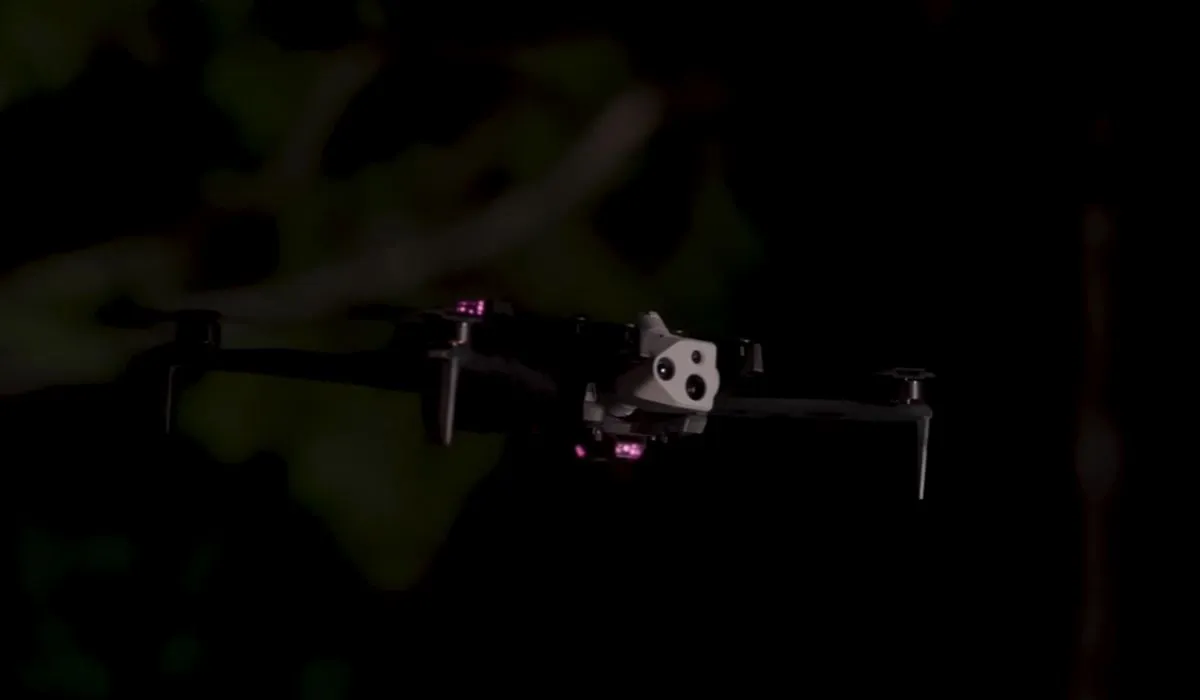 Source: Skydio
Source: Skydio
While a bit pricier than the Freefly Astro, the Skydio x10 makes up for it with a substantial 35-minute flight time and the convenience of cellular signal control. Its triple-camera payload delivers results that can rival the DJI M30T from yesteryears.
Features of Skydio x10
| Feature | Skydio X10 |
| Dimensions (unfolded, with propellers) | 31.1 x 25.6 x 5.7 inches |
| Dimensions (folded, without battery) | 13.8 x 6.5 x 4.7 inches |
| Weight (incl. batteries) | Connect SL: 2.11 kg / 4.65 lbs. Connect SL + 5G: 2.14 kg / 4.72 lbs |
| Max Takeoff Weight | 2.49 kg / 5.49 lbs |
| Sensors | 64MP visual camera, 48MP telephoto camera, 50MP wide-angle camera, 640×512 thermal camera |
| Flight time | Up to 36 minutes |
| Top speed | 45 mph (72 km/h) |
| Max wind resistance | 25 mph (40 km/h) |
| Operating temperature range | -10°C to 40°C (14°F to 104°F) |
| Autonomous flight modes | Follow Me, Point-of-Interest Orbit, Cinematic Mode, ActiveTrack, Beacon, 3D Scan |
| Obstacle avoidance | 360-degree, 3D |
| Return-to-Home | Yes |
| Waypoint missions | Yes |
| Live streaming | Yes, up to 4K resolution |
| Recording | Yes, up to 6K resolution at 30fps |
| Software | Skydio 3D Scan, Skydio Remote Flight Deck, Skydio Controller, Skydio App |
3. Parrot Anafi Ai
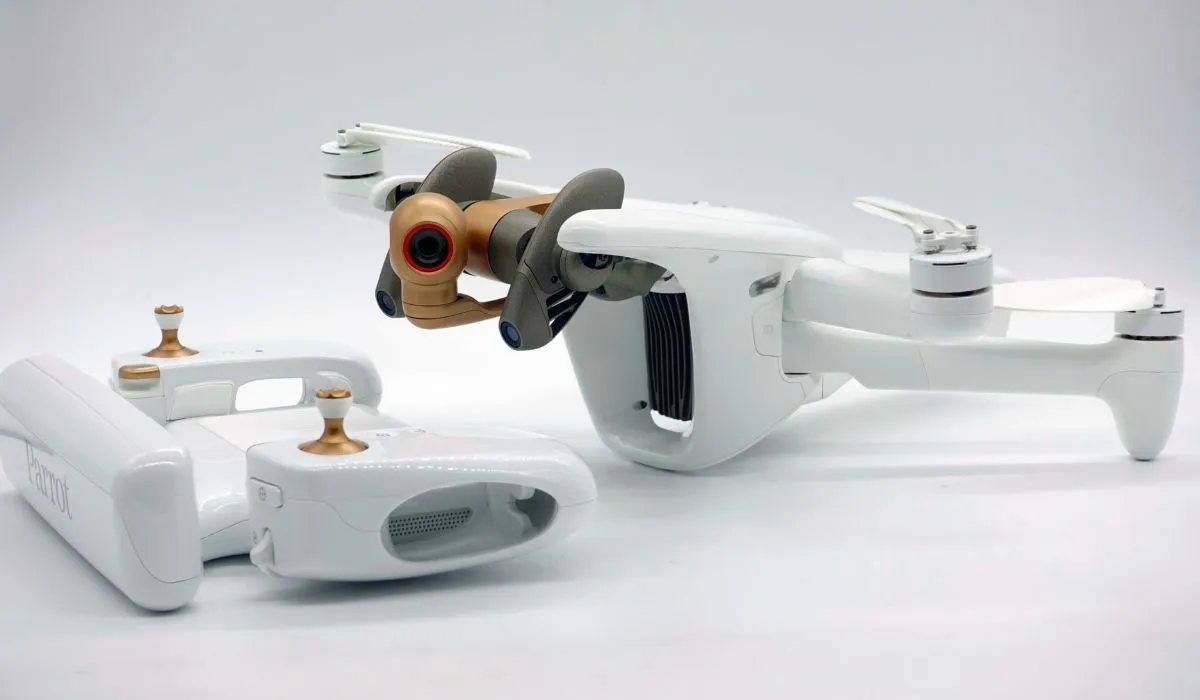 Source: Parrot
Source: Parrot
If you’re on a budget, the French-made Parrot Anafi Ai is a fantastic all-in-one solution. It’s domestically approved, offering a 48MP camera, an impressive 43-minute flight time, and portability that’s hard to beat.
Features of Parrot Anafi Ai
| Feature | Specification |
| Camera | 48 MP Sony CMOS sensor, 2.4-48 mm f/2.8-f/5.6 lens, 6x digital zoom |
| Video | 4K HDR (30 fps), 1080p HDR (60 fps) |
| Image stabilization | 5-axis hybrid image stabilization (2 mechanical axes, 3 electronic axes) |
| Camera tilt | 180° |
| Flight time | 32 minutes |
| Max range | 22.5 km (at 14 m/s without wind) |
| Max speed | 17 m/s (forward), 16 m/s (backward and laterally) |
| Wind resistance | 12.7 m/s |
| Max practical ceiling above sea level | 5,000 m |
| Max angular speed | 300°/s on pitch and roll axes, 200°/s on yaw axis |
| Weight | 320 g |
| Dimensions (folded) | 175 x 65 x 65 mm |
| Dimensions (unfolded) | 240 x 240 x 65 mm |
Overall, the Skydio X10 is the most advanced drone on this list, with the best camera, longest flight time, and longest range. However, it is also the most expensive.
The Freefly Astro is a good option for users who want a more open and modular drone, but it is not as easy to use as the Skydio X10.
The Parrot Anafi AI is the most affordable drone on this list, but it has a smaller camera sensor and shorter flight time than the other two drones.
Other honorable mentions in the domestic professional drone arena include Sony’s Airpeak, Vantage Robotics, and Flir Siras.
So, what’s the ultimate choice for professional drone pilots?
If budget constraints are a factor, the M30T takes the crown, closely followed by the Inspire 2. If you’ve got a bit more wiggle room in your budget, the Inspire 3 from the foreign contenders and the Freefly Astro from the domestic offerings are the undisputed kings.
In the ever-evolving world of professional drones, one thing is clear: the sky is not the limit, but just the beginning of a thrilling journey. Whether you opt for foreign or domestic, your perfect drone awaits, ready to capture the beauty of the world from a bird’s-eye view.
Happy flying!
Frequently Asked Questions
1. What are professional drones, and how do they differ from consumer drones?
Professional drones, also known as enterprise drones, are designed for specific work-related tasks, offering precision, reliability, and performance. They differ from consumer drones in their capabilities and features, such as advanced camera systems, longer flight times, and specialized accessories. Consumer drones are typically designed for recreational use, while professional drones are tools for businesses and industries.
2. Can you provide an overview of the key differences between the Matrice 30 and the Mavic 3 Enterprise?
The Matrice 30 is larger and more powerful, equipped with a triple-camera gimbal for a wide range of applications, including inspection, mapping, and search and rescue. In contrast, the Mavic 3 Enterprise is more compact and portable, offering a dual-camera gimbal and other enterprise features like a mechanical shutter and RTK module.
3. What are the benefits of the H-frame design in the Inspire 2, and how does it impact drone performance?
The H-frame design of the Inspire 2 results in a low center of gravity, providing remarkable wind handling, agility, and stability in various environments. This design also allows for reliable high-altitude flight with the use of high-altitude props.
4. Do I need a license to operate a drone professionally?
Of course, in most countries, commercial drone operations require a certification like the FAA Part 107 license in the U.S.







Add Your Comment